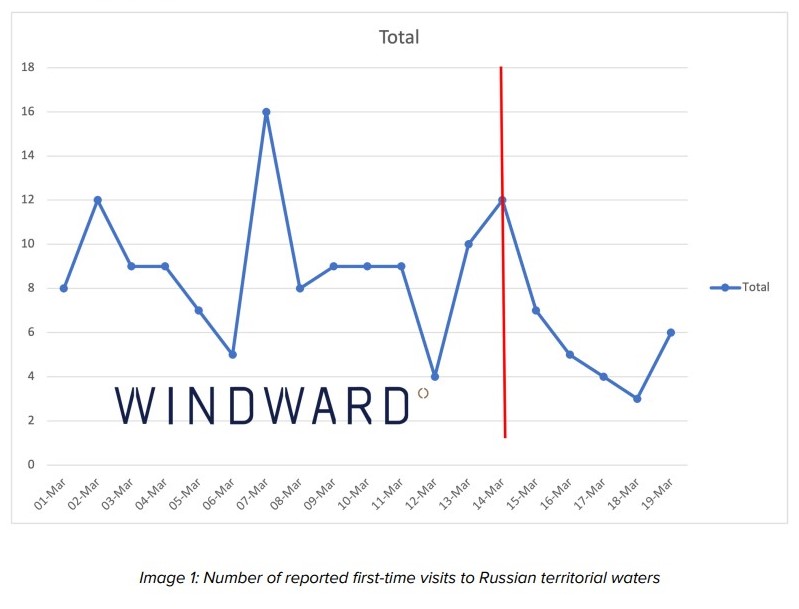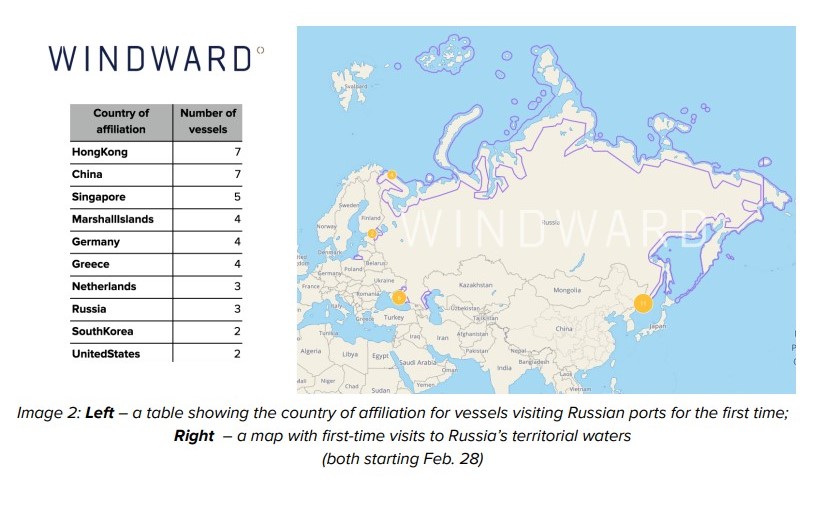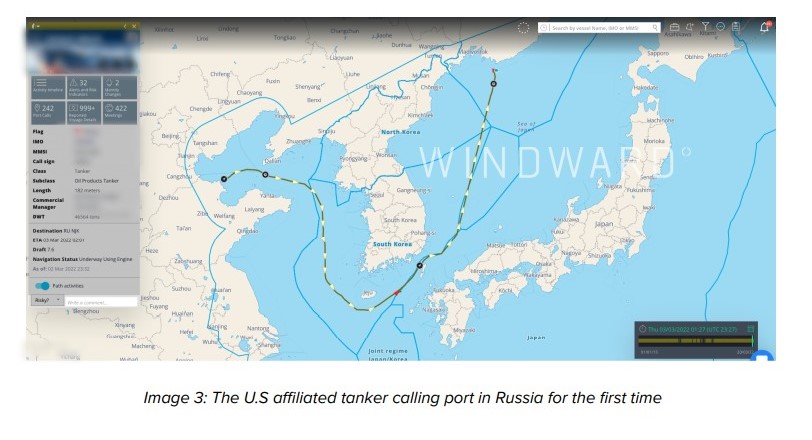Predictive Maritime Intelligence company Windward releases insights indicating that 22 unique vessels have entered Russian territorial waters since the beginning of the conflict.
The ongoing Russian invasion of Ukraine is disrupting local and global trade flows, including maritime operations.
Along with the consistent decrease of maritime operations in Russian ports, Windward’s behavioral data indicates there is also a reduction in the number of vessels visiting Russian territorial waters for the first time (first time visits can be considered deviations from operational patterns).

While it is expected that vessels that never visited Russian waters before would now completely avoid this “toxic” territory, our data indicates that these deviations have not completely disappeared.
Since the outbreak of the conflict, 22 unique vessels have entered Russian territorial waters (holding the same legal status as Russian land) for the first time. The vessels represent different classes: 12 cargo vessels, one container vessel), six tankers, one service vessel, and six commercial fishing vessels.

When we look further down the list, we can also find vessels that are owned or operated by companies registered in Germany, the United Kingdom and even the U.S.
One of these first-time vessels is a tanker that departed from Dongying (Northern China) on February 25 and entered Russia’s territorial waters on March 3 to make its first-ever port call in the Russian port of Nakhodka.
This behavior would have been considered completely normal for this tanker’s maritime domain during a regular period. Given the current situation and Russia-focused restrictions, however, the fact that the commercial manager of these vessels is an American company definitely made this port-call stand out.

After arriving at Russian waters and calling port in Nakhodka, the tanker departed and drifted in Russian waters before calling port on March 19 in a tanker terminal in Vladivostok, Russia.

While this voyage is not considered illegal or a violation of sanctions, it still raises questions, given the United States’ current policies. It will be interesting to see if this trend continues and how many companies will view these new regulations and restrictions as mere recommendations…

































































